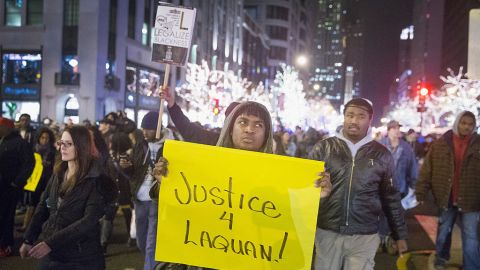Editorial: A Year of Conflict with the Police
In 2015, numerous videos showed the little-known face of police brutality.

La muerte generó protestas en Chicago. Crédito: Scott Olson | Getty
The year 2015 was a tough one for police authorities. This year, their actions began to be scrutinized and watched in a generalized manner. The public’s access to video cameras gave visibility to police abuse and contradicted the reports made by officers who gave twisted versions of the facts to justify their violent behavior.
Sadly, some sectors within the Police interpreted the protests against the rotten apples in the institution as pervasive persecution against its members.
It is estimated that 1,000 people died this year at the hands of the Police. According to the Washington Post, two-thirds of the cases included attacks against officers or happened as officers were defending someone who was being attacked. A third of the incidents had a component of mental health issues. One out of 10 people involved was shot by the Police despite being unarmed, and only 4% of the cases had a white officer killing an unarmed African-American. In the same period, at least 18 police officers were charged with a crime, many more than the average 5 per year seen for many years.
Since 2014 ‒ with the Ferguson, Missouri, case and other subsequent incidents, ‒ police conduct came under the microscope of community and civil rights advocates and the media. The emergence of videos of an incident contradicting official reports undermined the trust on the Police. Given this situation, it was inevitable to wonder in how many past cases police officers were given the benefit of the doubt and their version taken as the truth.
Video cameras on police uniforms are a good idea to protect civilians from possible aggressions and officers from false testimony against them. The problem is that the rules agreed upon with police unions seem to be biased in favor of protecting officers instead of showing what really happened.
We hope that police departments recognize that technology has had an impact on communities ‒ especially those of color ‒ and bred more distrust. In this case, the Police is responsible for earning that trust without claiming to be the victim. That would be a good goal for 2016.




